Feb 20, 2019
Rural Patients with Chronic Disease: A Nonprofit Organization and a Health Department Leverage Federal Funding to Provide Health Education and Care Coordination
 Research shows
that patient-centered health education and care
coordination can contribute to decreasing rural health
disparities. Using these approaches in innovative ways,
two rural organizations are using their grant funding
through the Federal Office of Rural Health Policy (FORHP)
to improve health outcomes for their communities'
patients with chronic disease.
Research shows
that patient-centered health education and care
coordination can contribute to decreasing rural health
disparities. Using these approaches in innovative ways,
two rural organizations are using their grant funding
through the Federal Office of Rural Health Policy (FORHP)
to improve health outcomes for their communities'
patients with chronic disease.
Already seeing results from health education efforts supported by their FORHP Delta States Rural Development Network Grant Program, Rural Alabama Prevention Center's (RAPC) director Loretta Wilson shares a specific illustration.
"We were doing a grant site visit at a church gathering," Wilson says, whose organization is based in Boligee, Alabama. "Out of nowhere, we heard this voice that said, 'Body and Soul saved my life.' The tone of this voice made the hairs on my arm fly up. Everyone stopped talking to listen to him. He'd had a massive stroke, couldn't walk, couldn't talk. After going through the Body and Soul program and applying those strategies in that curriculum, eating healthier, exercising, he said, 'I am able to sit here and tell you I'm in the best health I've ever been.' He was 50 years old. When you're at a site visit and you hear that, and then you look around and everyone's saying, 'Did you hear that?' It's almost like, case closed. We're helping someone. And we're getting that feedback all the time."
Wilson is talking about participants' feedback on Body and Soul Wellness Program and Power to Prevent program. By leveraging its grant funds, RAPC uses these two programs in efforts focusing on education and lifestyle modification for hypertension and diabetes and prevention of heart attacks and stroke.
"Just look at Alabama's state statistics of those dying early from these chronic diseases," Wilson says. "We want to stop seeing our community die young because they've just lacked the education on how to care for themselves. I almost can't believe what I'm hearing about the good things happening because of this grant — and about just how much this education is needed. Our communities are already benefiting because of it."
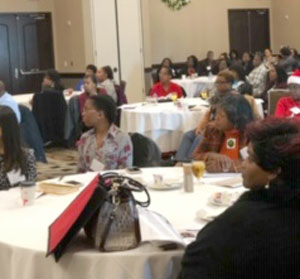
Wilson explains that the programs start with Auburn University providing curriculum coaching for RAPC's six partners. Every year, these partners train church coordinators in the 36 participating churches located in an 18-county area, with 2 churches per county. Quarterly reports allow RAPC to track participant progress. Grant funding also supports yearly Wellness Conferences with attendance numbering at 100 or more individuals. Attendees are pastors, program leaders, program participants, and individuals interested in learning about the two programs. Wilson shares how these education programs have built-in sustainability.
"A church site's pastor is the important step," Wilson says. "Then the program becomes sustainable with a train-the-trainer approach. If a pastor or coordinator moves on, the program is in place and can be transitioned to another coordinator. For our communities, churches can be on the forefront providing health education and it's important this education is sustainable."
Wilson notes the differences in the programs. The Body and Soul program is focused on developing wellness programs in churches through health coaching, while the Power to Prevent program involves structured information given in sequential classes. The latter program's coordinators collect body mass index (BMI), blood pressure, blood sugar, and cholesterol measurements that provide objective measures supporting the program's success. She says that the church coordinators are so committed to their participants, usually around 15 people per class, that if a participant has an unavoidable class absence, the coordinator will try to meet with that participant in order to keep them engaged and current.
Wilson shares concerns about the stereotyped myth of rural populations being uneducable as opposed to the reality that knowledge gaps are due to the disparity of access to health information. For example, she notes that fewer rural healthcare providers translates into fewer appointment minutes devoted to provider-directed chronic disease education. Instead, those limited education minutes are replaced by instruction around acute care needs. She points out that this disparity further fosters a cycle of unmet education needs around prevention. The chosen curricula help address these information gaps because the programs bring health information to where people are gathering in the Alabama counties.
Specific Evidence-based Health Education Programs
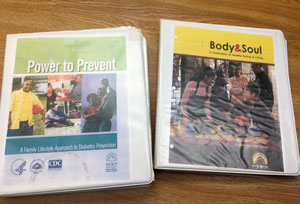 Wilson explains that the Body and Soul
program is an evidence-based program with four pillars:
engaged pastoral church leadership, healthy church
activities, a church environment that embraces healthy
eating, and peer coaching for church members.
Wilson explains that the Body and Soul
program is an evidence-based program with four pillars:
engaged pastoral church leadership, healthy church
activities, a church environment that embraces healthy
eating, and peer coaching for church members.
The FORHP grant funding also allows Wilson's team to use Power to Prevent, another program geared to communities where diabetes rates are high. The curriculum consists of sequential classes that provide education on topics from the benefits of specific physical activities to learning about diabetes and its connection with blood pressure control and cholesterol levels.
Education Benefits from a Health Department's Remote Monitoring Project
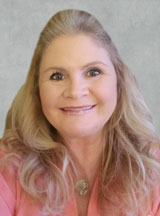
In another rural area, patient education is happening as part of funding provided by FORHP's Small Health Care Provider Quality Improvement grant program awarded to the Granville Vance District Health Department (GVDHD) in Oxford, North Carolina. Wendy Smith, the department's public health nurse, says they've leveraged their quality improvement funding to implement a remote patient monitoring (RPM) project. Through collaboration with the community's local healthcare providers, Smith says GVDHD has been able to bring real-time quality patient care directly into the homes of their rural patients. The goal of this RPM program is to decrease preventable hospital readmissions for uninsured/underinsured patients with chronic disease. For patients who complete the program, Smith says she's noted evidence of the educational impact.
"I see so clearly that patients are learning how chronic disease affects their bodies when they participate in remote patient monitoring," Smith says. "The equipment allows learning to happen in their own homes with my team doing education as a natural part of the program. Over a 60- or 90-day monitoring period, patients improve their disease self-management skills and they tell us how much they appreciate the education they are receiving."
Smith says she also sees that patients develop a sense of pride regarding their new understanding about how their personal behaviors impact their disease. For example, diabetics better understand how their diet impacts their blood sugar, or congestive heart failure patients better understand how their fluid intake impacts their weight trends. She explains how this comes about.
What we are seeing is that the monitoring process is actually providing the best possible classroom these patients can have.
"We focus on patients with congestive heart failure, diabetes, chronic kidney disease, and COPD [chronic obstructive pulmonary disease]," Smith says. "Many patients have all four of those conditions. After they submit their subjective and objective vital sign information with the remote monitoring equipment, if we see an alert result, we call and we give them real-time education that they can understand and remember. What we are seeing is that the monitoring process is actually providing the best possible classroom these patients can have. Over time, this knowledge has the potential to become like a built-in sustainability arm of the grant effort because patients can continue to use what they learned to keep themselves out of the ED and the hospital after they're no longer being monitored."
Smith shares some of their early results collected for their 2016 to 2019 grant cycle demonstrating that 43 of 43 RPM participants had no emergency room visits or hospitalizations.
A specific example highlighting how the RPM program can directly impact the patient is the case of a new diagnosis of congestive heart failure. Because this condition can be affected by heart rates that are too low or too high, Smith says access to the results of a prolonged interval of monitoring completed in the patient's home environment — as opposed to a hospital setting — assisted the patient's clinician in developing a final treatment plan that has kept the patient stable and out of an acute care setting.
Setting Up a Remote Patient Monitoring System
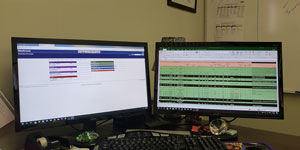
GVDHD's Smith says no one should be intimidated by remote monitoring technology. The crucial first step is choosing one of the multiple health technology providers that now offer remote monitoring packages, a step Smith says was possible because of FORHP funding. Once a patient agrees to participate, Smith or another GVDHD colleague has a face-to-face visit with the enrollee either in the hospital or at home. Equipment is set up, the patient is given a demonstration, and monitoring begins.
"It's really very elementary to set up," Smith says. "Everything is color-coded and very easy for patients to understand. We show them how to enter their results and transmit. The expectation is that they transmit every day, 7 days a week, no later than 11:00 a.m. On our end, the technology company has created a secure dashboard where all results are displayed. I usually check the patients' transmissions between 12 noon and 1:00 p.m. and follow up on any alert values. If I'm unavailable, another of my colleagues steps in."
Smith says alert values can be resolved quickly by using the patient's provider-generated standing orders. The public health nurse sees an abnormal value, contacts the patient, explores why the alert value occurred, initiates an intervention, and provides prevention education. If no transmission occurs, the patient is also called, an event Smith says has usually been due to patient oversight because they were on their way to a provider visit.
Winning Combination: Not Just Providing Health Education, but Building and Formalizing Care Coordination Efforts
Both grantees are also leveraging their FORHP funding to lead care coordination efforts. Alabama's Wilson says that RAPC's effort focuses on linking a network of services for use by the area's local health departments, human services departments, and multiple clinics, along with two of the area's hospitals and their home health agencies. Not only does this networking effort help provide services that can help prevent hospitalization, it allows hospitalized patients to be identified for needed outpatient services before discharge, an effort that helps reduce readmissions.
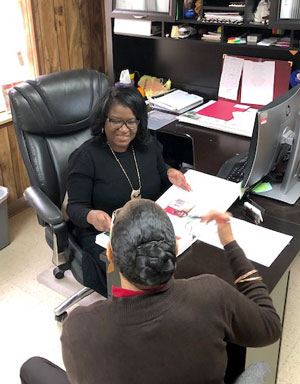
"We are working with all of these partners to develop a comprehensive resource directory for the partners and the patients," Wilson says. "Whether it is medication assistance needs or finding a wheelchair, this will be a comprehensive plain-language document that meets a wide variety of needs for patients and the clinical and non-clinical local organizations. One of the best parts of our partnerships is finding those patients who needed assistance and just didn't know how to go about getting it."
In North Carolina, GVDHD is leveraging its grant funding to organize care coordination specifically for underinsured or uninsured patients. This work meets several additional grant objectives: the development of an evidence-based culture and delivery of coordinated care among medical team and provider entities in the primary care setting. Smith has successfully created a community-based care management team and gathers representatives from a hospital's discharge planning team, a mental health organization, a rural Federally Qualified Health Center (FQHC), a social service agency, and a quality improvement team member from a local hospital's parent organization for monthly meetings focused on innovations directed at providing care for the underinsured/uninsured patients in the area. In this last year of funding, Smith says this group is now creating its sustainability plan.
Finding Solutions for Rural Health Challenges
Smith and Wilson talk about how they worked through respective project challenges to find solutions that worked. For Smith, the initial community outreach to providers gave her high expectations for their enrollment goal of maintaining participation of 25 patients in the program at any one time because nearly every provider would tell her they had 25 of their own patients to send her. Yet those referrals were slow to materialize, despite the program being a no-cost offering with nursing support provided through the health department.
"When we weren't getting referrals, I had to ask myself why," Smith says. "What I came to realize was that providers nowadays have to maximize what they are doing in their 15- or 30-minute visits. It seemed that a referral was just one more item on a less strategic to-do list. Once we identified that, our solution was to be more hands-on with the referral process in order to provide our program to a maximum number of patients who needed it."
Wilson points out that many rural health challenges have a root cause in lack of chronic disease education. She believes that programs like Body and Soul and Power to Prevent provide a structured and appropriate solution for this need. Although she is very encouraged about their grant-supported educational activities to date, her biggest challenge remains the enormity of the educational needs of residents living in the 18 rural Alabama counties their grant touches.
We must have boots-on-the-ground grassroots individuals and organizations making that direct impact with communities to show our communities the direction to health.
"Our rural communities face health challenges," she says. "Education is at the core of these challenges. You cannot assume that everyone is being educated by primary care providers. We must have boots-on-the-ground grassroots individuals and organizations making that direct impact with communities to show our communities the direction to health. Until we can make healthy behaviors a seamless part of life, we will continue to see our communities die prematurely of preventable illnesses."

